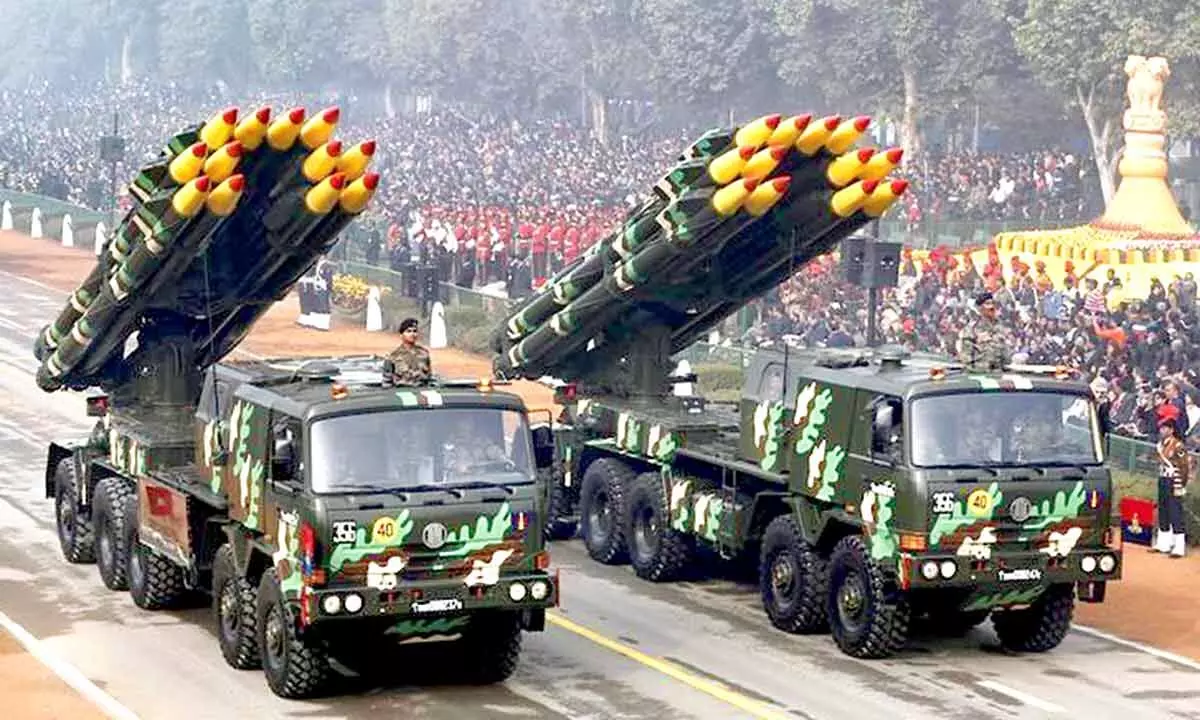As neighbours up their arsenal, India’s military preparedness should go way farther
Modernisation of the armed forces will put away obsolete infrastructure
image for illustrative purpose

The IAF needs 45 fighter squadrons but the strength has come down to a precariously low of 29 squadrons. India needs more aircraft carriers’ to bolster maritime security. It is seen as a significant step towards self-reliance in the defence sector. It also proves India’s maritime power in the subcontinent and continues to maintain dominance in the region, and beyond
Prime Minister Narendra Modi has been updated about the security situation and operational readiness of the armed forces by the Chief of Defence Staff, General Anil Chauhan.
The interaction happened during the Combined Commanders' Conference 2023 in Bhopal, which, among other critical issues, also discussed aspects of digitization, cyber security, challenges of social media, Aatmanirbharta, absorption of Agniveers and joint efforts.
In a significant departure from the past, the scope of the three-day conference was expanded this year with the inclusion of multi-layered and interactive sessions with soldiers from every command of the Army, Navy and Air Force, including the Tri-Services Andaman and Nicobar Command. Military commanders deliberated in detail on the ways forward for greater integration among the three services.
The conference provided an opportunity for the commanders to review modernisation of the armed forces and military operations, including those that have been completed or are ongoing, apart from dwelling about improving the country's defence capabilities.
The IAF needs 45 fighter squadrons, as recommended by the Parliamentary Standing Committee on Defence decades ago, but the strength has come down to a precariously low of 29 squadrons. India needs more aircraft carriers’ to bolster maritime security. It is seen as a significant step towards self-reliance in the defence sector. It also proves India’s maritime power in the subcontinent and continues to maintain dominance in the region, and beyond.
India is the fifth largest economy in the world and with INS Vikrant, our position in the Indian Ocean will become stronger. The country is focused on upholding the availability of all facilities and opening sea lanes of communication while maintaining the freedom of navigation and an aircraft carrier is an important aspect towards achieving this. Moreover this has given a timely boost to around 500 ancillary units and other related industries.
Technologies built for these warships are not only used for ships or defence purposes but also for other infrastructure. The ropes and steel made for the ship can also be used outside and they are all made in the country.
Constructing a ship is important but having a flow-back effect on the overall economy and enhancement is paramount.
As far as the Indian Navy is concerned, half of its submarine fleet of 16 is getting old and needs replacement. The four German HDW and ten Russian Kilo class submarines were inducted in the 1990s. Though six Scorpene class submarines have joined the Indian Navy, the strength is not sufficiently encouraging. That explains the proposal induction of six more diesel electric submarines. However, for all the enthusiasm that has been displayed, one should not forget that the move began 15 years back and there has hardly been any further progress in actually implementing the proposal.
In the blue economy, safe sea link communication is important. The fleet plan made post-independence had four aircraft carrier developments. In 1950 planners proposed three aircraft carriers. Taken on those lines indicates that the Navy which is centred around the aircraft carrier, implying that we should have more of them. It will be a strong step if we can make our own aircraft carriers.
India's export of military hardware reached an all-time high of Rs 15,920 crore in the financial year 2022-2023. India’s defence budget for the coming fiscal (2023-2024) has seen an impressive 13 per cent increase, which on the face of it looks very robust but lacks enough meat inside.
Most of the weapon systems and platforms are ageing as some of them were acquired way back in the 1970s. As testified before the Parliamentary Standing Committee on Defence in 2018, the then vice-chief of Indian Army Lt. Gen. Sarath Chand had said that 68% of our equipment comes in the vintage category, with just 24% in the current and eight per cent in the state-of-the-art category.
At present, India spends less than two percent of GDP on defence, which, if taken to three percent, as the neighbours are spending much more, our armed forces can be equipped with the required resources to tackle a two-front war scenario.
Besides the joint China and Pakistan threat on the land borders, the country's economic and strategic interests in Indian and adjacent maritime area are also being challenged, for which the Indian Navy requires sea control and sea denial capabilities.

